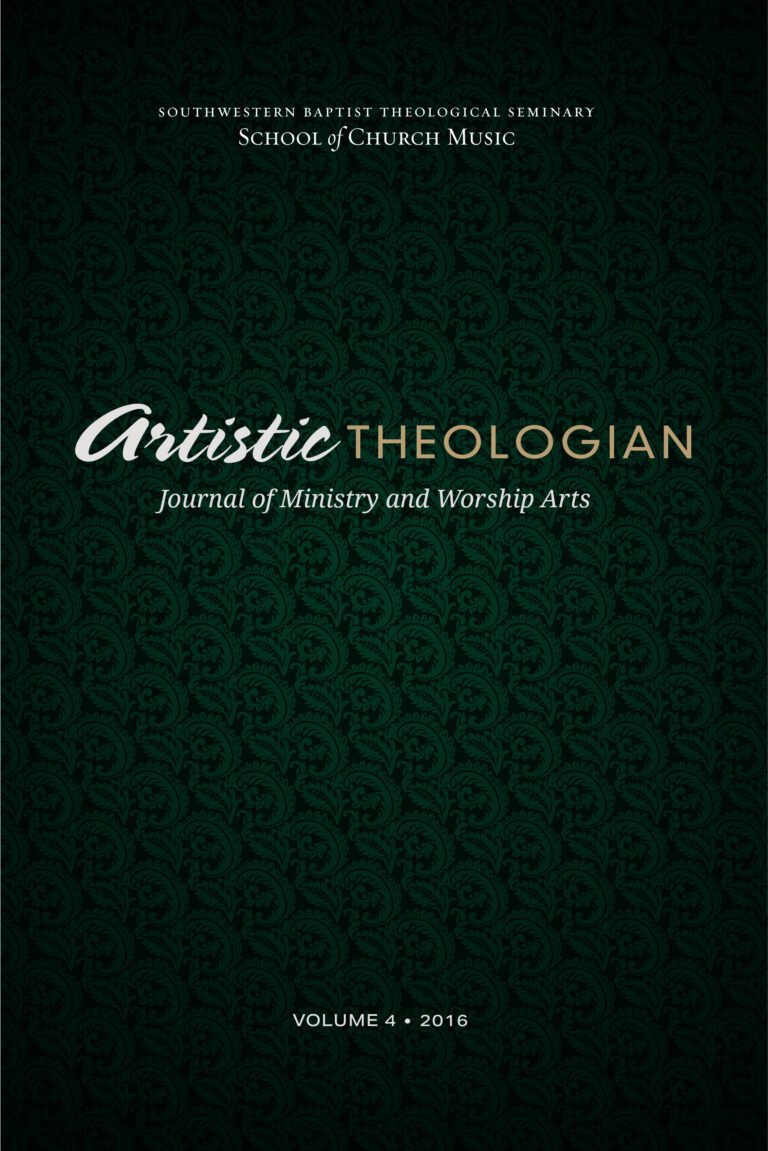
“Thus Says the Lord”: Biblical Worship in Contemporary Practice
Artistic Theologian
Volume 4, Summer 2016
Editor-in-Chief: Scott Aniol
Praying and Believing in Early Christianity: The Interplay between Christian Worship and Doctrine, by Maxwell E. Johnson. Collegeville, MN: Liturgical Press, 2013. 148 pp. $19.95.
Prosper of Aquitaine once wrote that “the law of prayer should establish a law for belief” (2). This idea of prayer, or liturgy, informing and establishing belief is often stated by the shorthand expression lex orandi, lex credendi, which means “law of prayer, law of belief.” In this book, Maxwell E. Johnson explores whether liturgy influenced doctrine in the early church, or vice-versa, by analyzing the early church’s doctrines of soteriology, the Trinity, Christology, and the worship of Mary. Johnson is a pastor in the Evangelical Lutheran Church in America, professor of liturgy at the University of Notre Dame, and the author of more than fifteen books about liturgy. Johnson desires to show that “liturgical prayer does have a privileged place” in the development of doctrine (23). However, he also concedes that doctrine informs doxology throughout the history of the early church. Thus his main conclusion is that there has been a “creative interplay between praying and believing” (128) since the genesis of the early church, and that lex orandi and lex credendi both equally shape each other.
In chapter one, Johnson examines the doctrine of salvation by grace alone through faith and concludes that this doctrine was influenced by the liturgy of the early church. He shows how Augustine used the practice of infant baptism to defend the doctrine of original sin, and he gives examples of prayers and canons that prioritize grace in salvation. Then, in chapter two, he analyzes how prayer was used as a defense of orthodox Christology and Trinitarianism and how both heretical groups and orthodox groups adapted their liturgies after the councils of Nicea, Constantinople, and Chalcedon. In chapter three, he seeks to prove that the worship of Mary played a role in the buttressing of orthodox Christology. Johnson then in chapter four looks to history to give examples of how liturgy should shape ethics as well as doctrine and presents in chapter five the final understanding of his study.
Interestingly, Johnson does not present his thesis until the final chapter. In the first four chapters, he examines various issues and shows that sometimes the lex orandi shapes the lex credendi, sometimes it has minimal effect, and sometimes the lex credendi shapes the lex orandi. For example, he explains how the rites of baptism convinced Augustine of “the obvious need for all candidates—both adults and infants—to be liberated from sin, death, and the devil” (4). Additionally, both Augustine and Prosper appeal to the church’s ritual supplications for grace as their main argument against Pelagianism and Semi-Pelagianism (8).
Johnson also demonstrates how prayer directly to Christ affected the theology of Christ and God early on in church history. He sifts through various views on prayer in the early church and concludes along with Larry W. Hurtado that “Jesus was given a place that linked him with the one God in unparalleled ways” (30). Johnson cites the New Testament (1 Cor 16:22; Rev 22:20), the Didache, Ignatius of Antioch, a third-century eucharistic prayer, and prayers from the Syrian East, which are all directly addressed to Christ as God (30–31). He also quotes the Gloria and Te Deum as evidence of liturgical prayer to Christ even before the Council of Nicea (46). Later, he states that the arguments of Athanasius of Alexandria and Basil of Caesarea regarding the baptismal and doxological addresses to the Holy Spirit are what led to the final version of the Nicene-Constantinopolitan Creed (64).
However, in other instances, Johnson concludes that liturgy had a minimal effect on doctrine. In fact, in the case of the development of the doctrine of Christ’s two natures in one person (90), the reverse of lex orandi, lex credendi is true. To reflect the teaching of the hypostatic union, which was articulated at Chalcedon in AD 451, the adoration of both of Christ’s natures was incorporated into the eucharistic liturgy of Constantinople during the reign of Emperor Justinian I (AD 527–565) (92).
By the final chapter, Johnson very cogently proves that liturgy played a major role in shaping the early church’s doctrine. He also shows that “doctrine checks doxology just as much as praying assists in the shaping of believing” (140). Yet there are some weaknesses in the book, too. First, it is difficult to connect chapter four to the rest of the book. His conclusion that the “lex orandi of the eucharistic sacrifice . . . may well be shaping again not only the lex credendi but also the lex agendi, the self-offering of Christians in the world” is biblically and historically veracious. However, this chapter seems to be somewhat tangential to his thesis. Also, he often quotes an entire document, such as The Canons of the Council of Orange, which has 25 articles and occupies five pages of text (9–13), to make a simple point. Finally, he sometimes cites heretical and apocryphal documents, such as the Protoevangelium of James, and tries to purport them as “orthodox” just to prove his arguments (80).
Johnson’s conclusions about Christian worship and doctrine in the early church are supported by his vast research and quotation of primary sources and modern patristic scholars. However, by paring down his quotations and analysis to what is truly pertinent, he could have produced a more concise, cohesive, and convincing work. Despite this excess, Johnson still has given to graduate students and liturgical scholars helpful analysis of the interplay between liturgy and theology.
James P. Cheesman
Southwestern Baptist Theological Seminary





